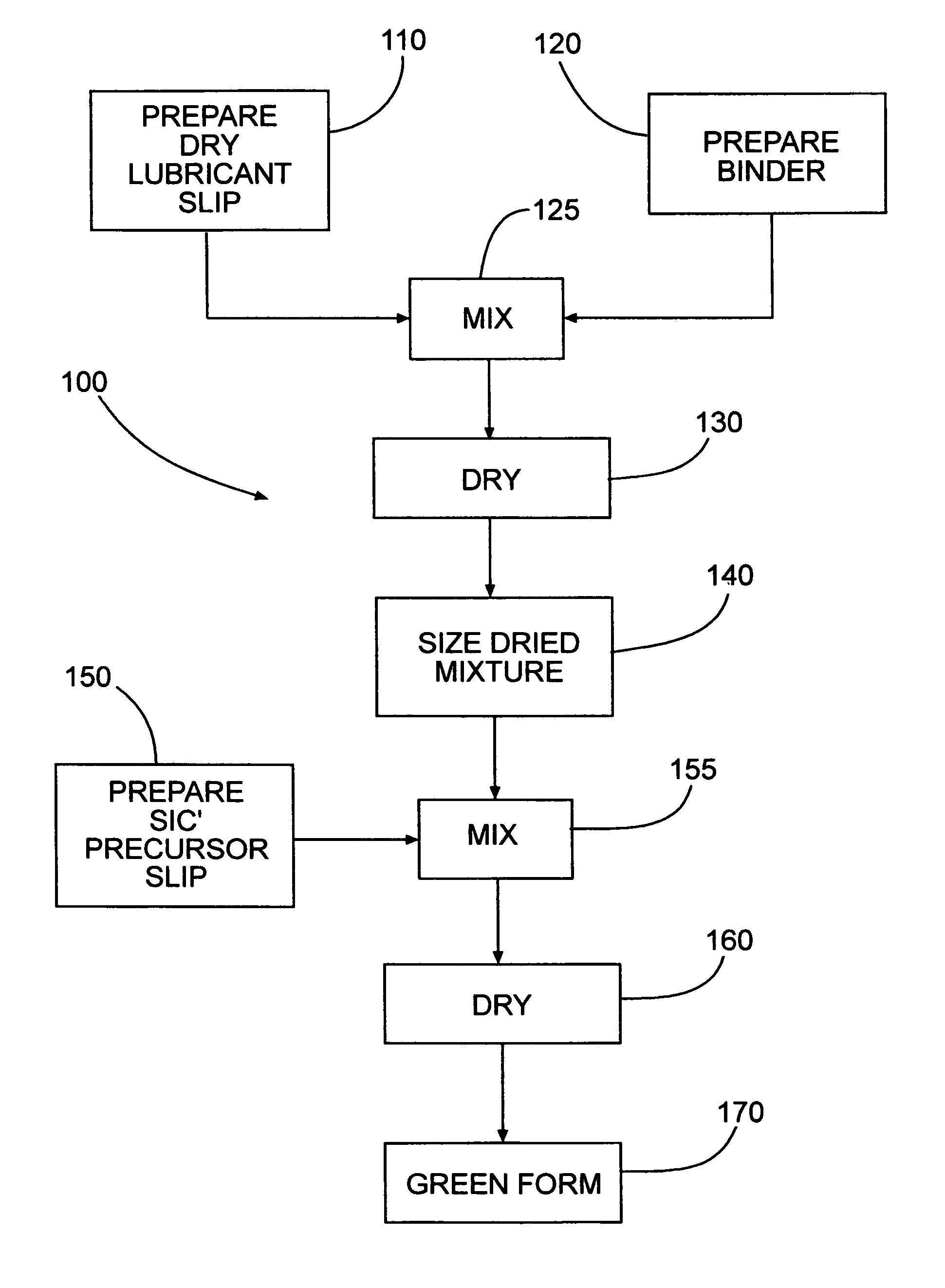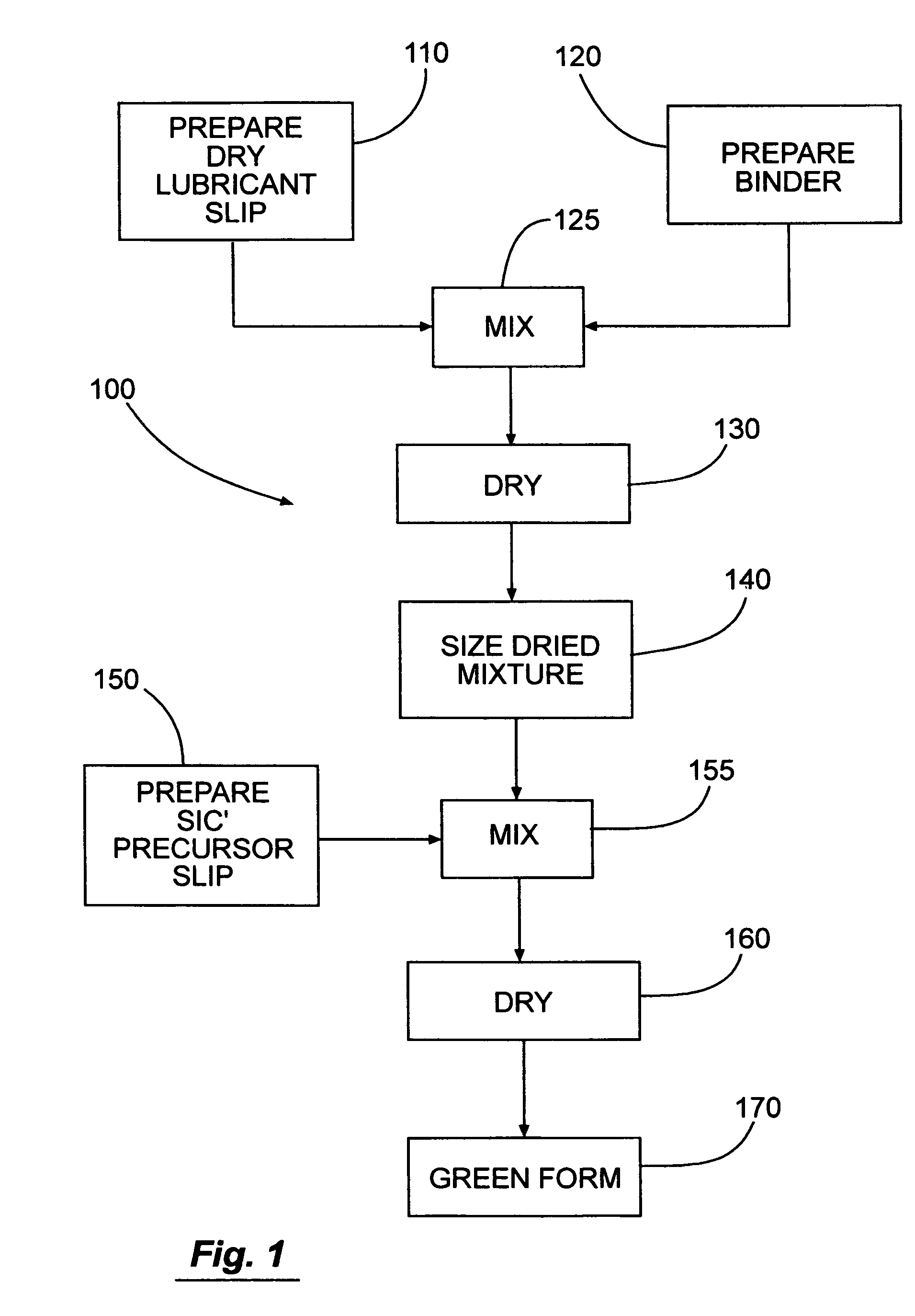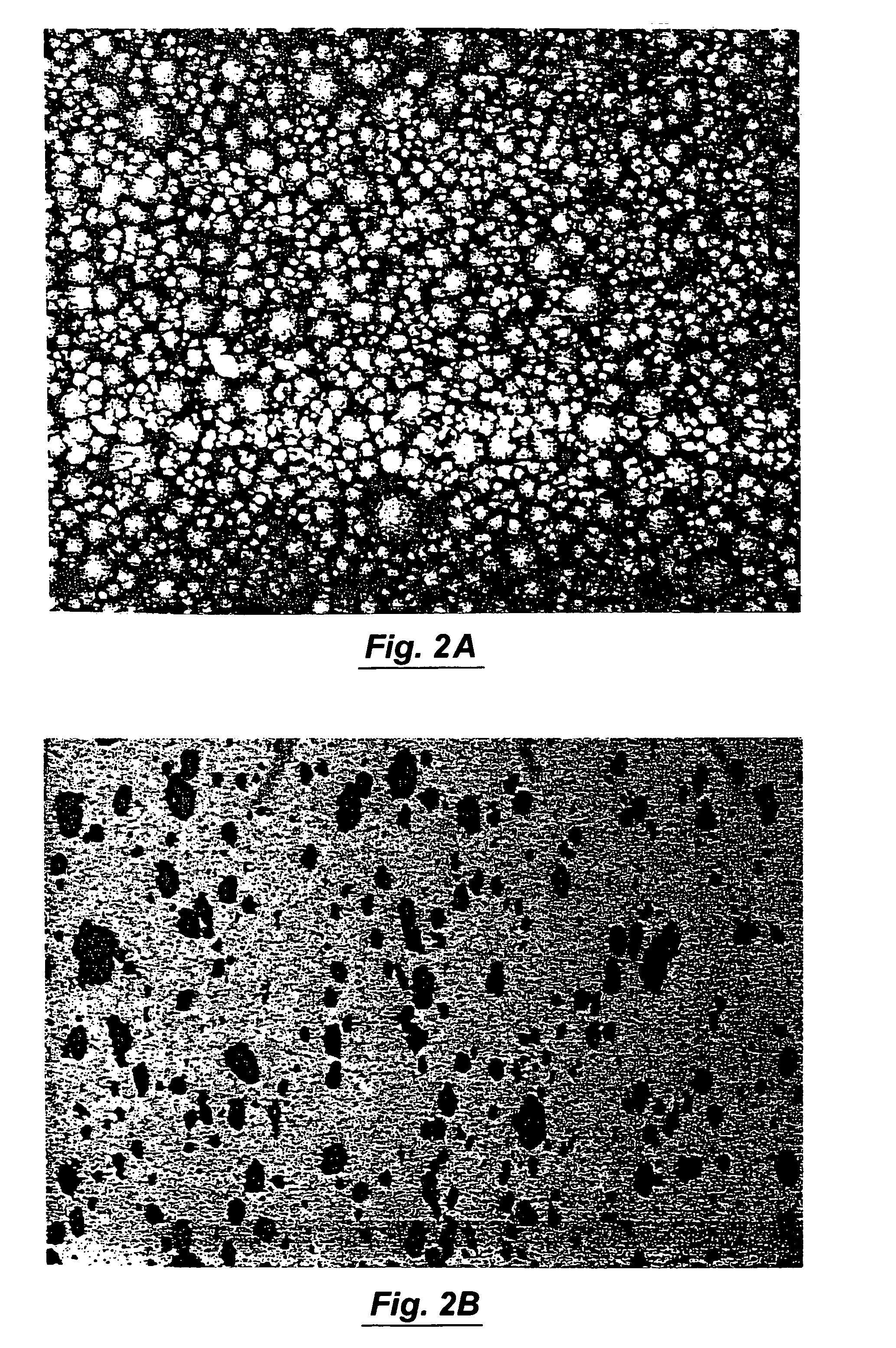Graphite loaded silicon carbide and methods for making
a silicon carbide and graphite technology, applied in the field of graphite loaded silicon carbide and methods of making, can solve the problems of mechanical seal failure, large compressive stress normal to the seal surface, and high rotational speed or sliding velocity,
- Summary
- Abstract
- Description
- Claims
- Application Information
AI Technical Summary
Benefits of technology
Problems solved by technology
Method used
Image
Examples
Embodiment Construction
[0025]The invention provides exemplary silicon carbide composite ceramic bodies and methods for producing such silicon carbide composite ceramic bodies. In a broad sense, the ceramic bodies of the present invention comprise a dry lubricant that is dispersed into a silicon carbide matrix. The resulting ceramic body includes an exemplary microstructure, resulting in a robust and durable product which retains the lubricant, and has a density of at least about 2.50 grams per cubic centimeter (g / cc), and more preferably at least about 2.75 g / cc. The dry lubricant may serve as a lubricant in operations where the ceramic body is in sliding contact with another surface. In this manner, the time to failure in the event of dry running is increased and the risk of dry running the part is mitigated. Wear and power consumption are also reduced.
[0026]Merely by way of example, silicon carbide ceramic bodies produced according to the invention are useful in a wide variety of applications. For examp...
PUM
| Property | Measurement | Unit |
|---|---|---|
| size | aaaaa | aaaaa |
| size | aaaaa | aaaaa |
| temperature | aaaaa | aaaaa |
Abstract
Description
Claims
Application Information
 Login to View More
Login to View More - R&D
- Intellectual Property
- Life Sciences
- Materials
- Tech Scout
- Unparalleled Data Quality
- Higher Quality Content
- 60% Fewer Hallucinations
Browse by: Latest US Patents, China's latest patents, Technical Efficacy Thesaurus, Application Domain, Technology Topic, Popular Technical Reports.
© 2025 PatSnap. All rights reserved.Legal|Privacy policy|Modern Slavery Act Transparency Statement|Sitemap|About US| Contact US: help@patsnap.com



